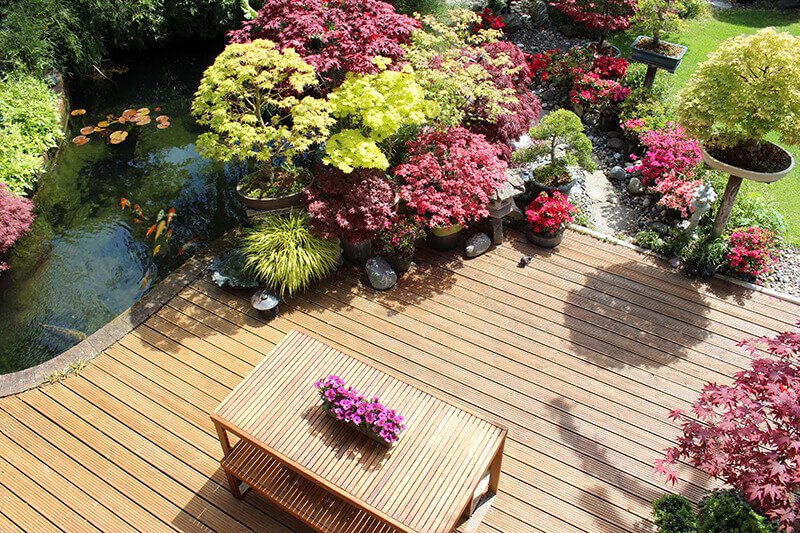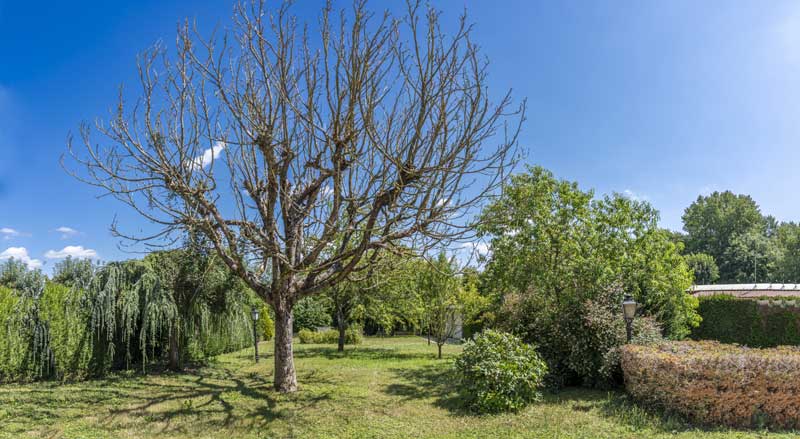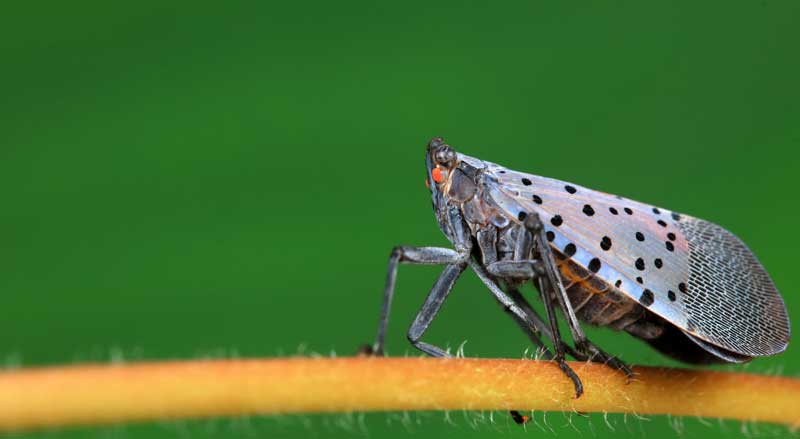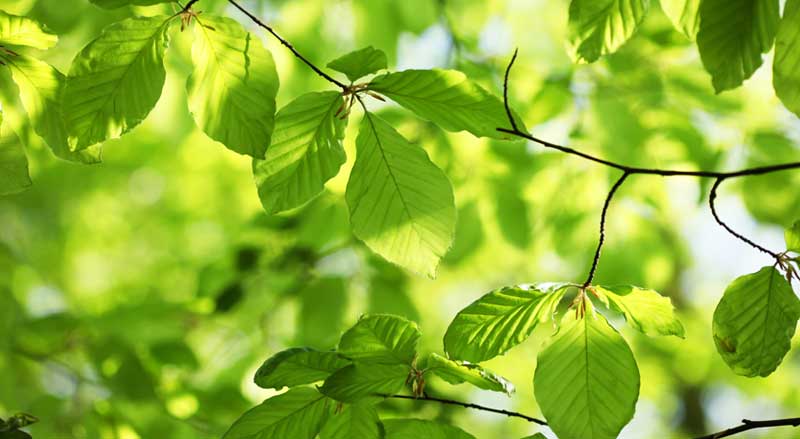Planting well-chosen trees is a crucial aspect in pool installation and landscape design. This key element sets the tone for your outdoor space. Trees are fundamental to the overall appearance and usability of your poolscape.
By planting the right trees around your pool, you will increase your privacy and shade, create easier maintenance and cleanups, and promote proper water conditions.
Considerations Before Planting
If the trees around your pool are well-chosen, they will make your property more efficient. Therefore, before deciding on what to plant, consider the following attributes of trees:
Root system
Does the type of tree you like have an expansive root system that could affect your pool?
Leaf drop
Cleaning up leaves isn’t fun any time of year. It’s even less fun when you must spend your days skimming the pool for debris instead of just jumping in.
Height
Will the height of your trees end up providing too much shade around your pool? This could have a great effect on water temperature and the amount of time you can spend enjoying your space.
Canopy
The canopy of your trees will provide privacy and shade. It will also extend out farther then you may think. Knowing what various trees canopies look like will help you make a choice that won’t crowd your space or leave you wanting more.
Overall View
Do the trees you have chosen fit into with the overall aesthetics of your home and landscape? Using a unique variety of tree like a palm can create interest. But one lonely palm next to your pool might look odd. Create a cohesive look that allows for lines of sight to the entertainment areas of your landscape.
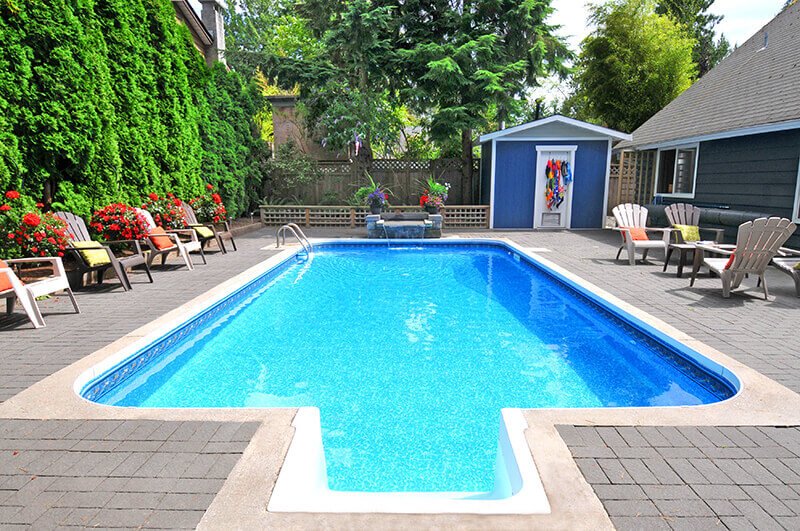
Fall is considered the best time of year to plant trees. Cooler temperatures allow trees to use less water and nutrients while becoming acclimated. The season also gives tree roots time to spread out and grow before the ground freezes. Giving your trees a chance to settle in the ground during the fall allows for lots of new growth during spring.
Tree Varieties for Your Pool Area
Palm
Palms are excellent choices due to their narrow spreading habit. Their roots also tend to grow straight down which helps to avoid drainage issues.
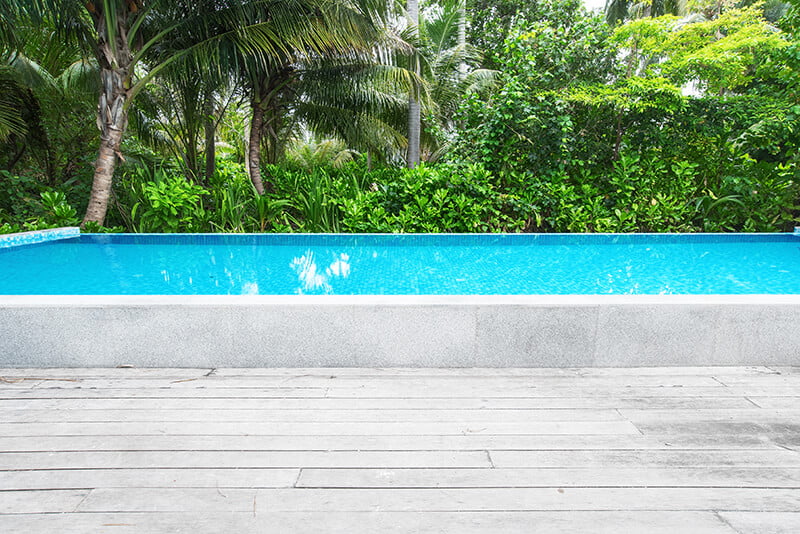
When you plant palms in a cluster, they look attractive and make excellent privacy scenes. Palm trees hold the iconic look of the beach and vacation. They can easily provide a resort-like feel to your landscape.
A palm may seem like an odd choice for New Jersey, but there are a few varieties such as the Sabal or Mediterranean Palm that will flourish in our climate. Palm trees are hardier in the cold than you would think.
Japanese Maple
Most Japanese maples grow at a slow rate and are admired because of their delicate shape and changing leaves. They respond well if planted in sheltered places and require a lot of water during hot weather.
Japanese maples like the sun but can do with shade for a part of the day. Their root system is directly correlated to the size of their canopy. These deciduous trees form a horizontal root structure that spreads mainly within the top 24 inches of soil. Narrow fibrous roots spread to the tree’s drip line and slightly beyond.
Some say the Japanese maple tree’s beauty is unmatched by other trees. They range from 2 to 30 feet tall and come in forms including weeping, rounded, dwarf, mounding, upright, or cascading.
Citrus
Citrus trees give an extra appeal and personality to your pool. From the colorful flowers they produce in the spring to the fruit you’ll be able to share, citrus trees will give your poolscape some added pop.
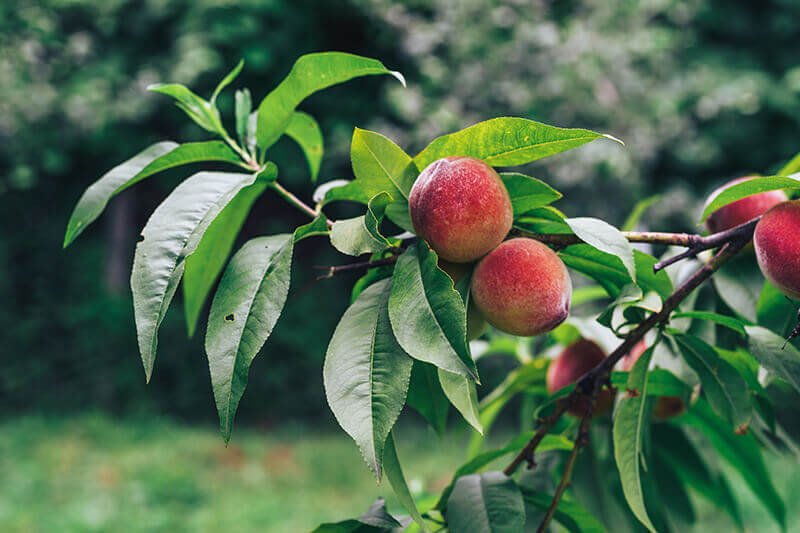
Perimeter placement of citrus trees can be used to create an element of privacy. This is due to their lush canopies. These types of trees are great in the sun. Plant them on the sunny side of your property and they will provide shade during hot summer months.
Many varieties have lush glossy leaves such as the persimmon or jujube. These and many other citrus trees are very ornamental in appearance.
Hinoki Cypress
This evergreen conifer has striking lime vegetation. Hinoki cypress are perfect for privacy screens because of their dense foliage. They can grow up to 130 feet tall but there are also dwarf species. The dwarf varieties can add texture to your poolside garden without taking up too much space.
These trees like acidic soil, but you can plant them in other types of soil if you treat with an acidic fertilizer. They have a slow to medium growth rate of about 12 inches per year. They will take some time to cultivate in your space. But they are hearty plants that will last right along with your poolscape.
Fruitless Olive
These trees boast a soft gray-green foliage that can add to the appearance of your pool. Choose fruitless cultivars, which tend to be slow growers and look best when planted in deep and fertile soil. This option will help cut down on unnecessary debris around the pool.
This type of olive tree is described as a distinctive evergreen, growing at a slow to medium rate. At maturity, it may reach 25-30 feet with approximately the same width. Once it establishes itself, it becomes tolerant to varied weather conditions.
These trees are drought resistant, and grow in shallow, alkaline soils with little fertilization. They have shallow roots which are not considered invasive.
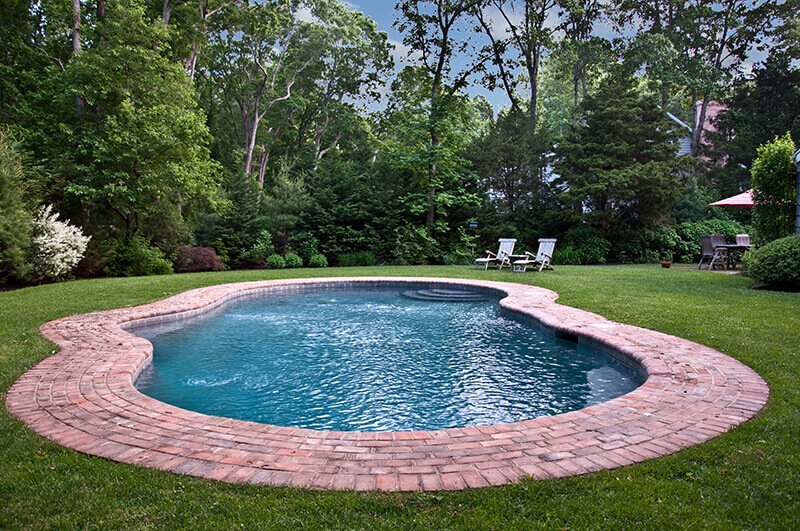
Are you having problems identifying the best trees to plant around your pool? Contact us for high-level and fully insured tree care services. We will happily work with your contractor or landscaper to make sure the right trees are placed throughout your property.

